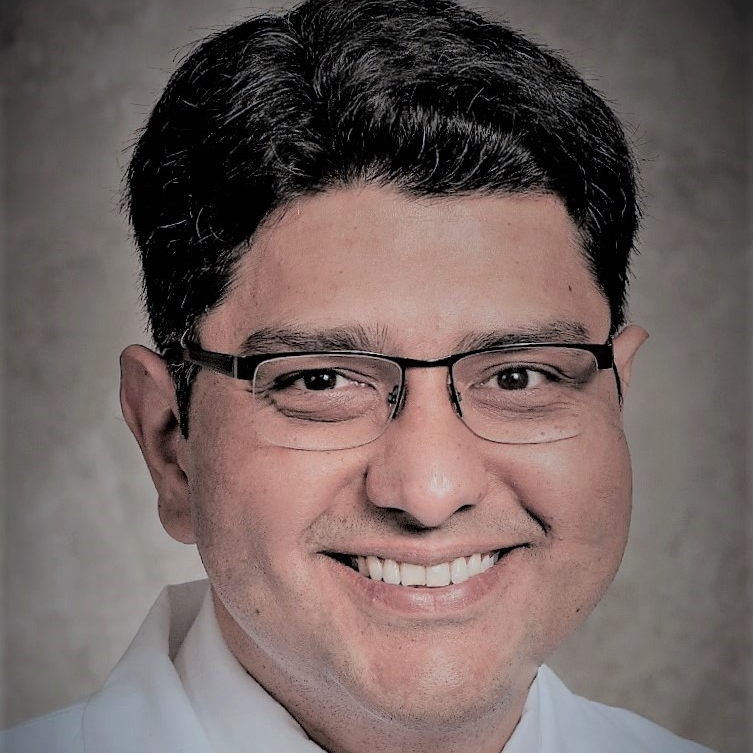Venetoclax-Selinexor for Relapsed/Refratory DLBCL
A Conversation with Dr. Farrukh Awan
In this series about treatments present and future for specifically large B-cell lymphoma, the most common subtype of non-Hodgkin lymphoma, Dr. Farrukh Awan shares about one clinical trial he’s a part of in exploring more treatment options – venetoclax-selinexor.
Dr. Awan, an associate professor and hematologist-oncologist at UT Southwestern, is a member of several professional organizations, including the American Society of Clinical Oncology (ASCO) and the American Society of Hematology (ASH). He is also the recipient of the Young Investigator Award from ASCO and has published on many topics, including ibrutinib and acalabrutinib.

- Video: Venetoclax-Selinexor (Phase 1) Clinical Trial Overview
- Video: Trial Progress & Side Effects
- Describe the venetoclax-selinexor clinical trial Phase 1 target patient
- What is the selinexor mechanism of action?
- What is the venetoclax mechanism of action?
- What are your thoughts on both venetoclax and selinexor?
- What are the primary factors when considering a clinical trial like this one?
- Treatment decisions are relative and subjective
- Experience with selinexor and venetoclax
- Next steps for the venetoclax-selinexor trial
- How many patients are enrolled in this clinical trial at UT Southwestern?
- Describe the selinexor side effects and management
- Describe the venetoclax side effects and management
Video: Venetoclax-Selinexor (Phase 1) Clinical Trial Overview
Video: Trial Progress & Side Effects
Describe the venetoclax-selinexor clinical trial Phase 1 target patient
This particular trial is for patients who have failed frontline treatment or have failed at least one prior treatment for these lymphomas, and/or if they don’t have any other option. That is, in the opinion of the investigator if they’re not candidates for other options, they can go on this trial.
This trial is also for patients who have failed treatment for acute leukemia. It has both groups of patients that are eligible to get these drugs.
What is the selinexor mechanism of action?
Selinexor and venetoclax are both pills that can be taken. They are not your conventional chemotherapy options.
They work very nicely, and they basically are designed to turn off the factory inside the cancer cell, which makes the products that keeps the cancer cell growing over and over again.
Essentially, selinexor goes inside the factory and blocks any product or production from the factory from coming out of the factory. Basically, the cells then die of the stress because the factory is not making all the stuff that it’s supposed to.
What is the venetoclax mechanism of action?
Similarly, the BCL-2 inhibitor or venetoclax, is a medicine that is designed to turn off the energy generator of the body or of the cell of the cancer cell.
It basically goes in and turns it off. Once you don’t have any energy source happening, the body to the cancer cell just basically dies.
What are your thoughts on both venetoclax and selinexor?
These are very nice and very targeted options, which are very promising. They are already approved in various indications for other cancers.
This is the first time that it’s been combined like this together in lymphomas and leukemias, and the idea is to turn off the cancer cells and to minimize damage to the normal cells.
What are the primary factors when considering a clinical trial like this one?
All of the above:
- age
- preference
- response to prior chemotherapy
- maybe the patient is not a candidate for chemotherapy
I had a patient who did not want any chemotherapy. I told him historically if I use chemotherapy, I can get you into a nice remission and we can do a stem cell transplant. We can do cellular therapy, CAR T-cells. He was like, “I would rather die than use chemotherapy.”
Why did he say that? Because his previous experience was horrific. He had chemotherapy. He had regular R-CHOP and he had every single complication under the sun. He almost died during the complications.
It was just very unfortunate, but he was so traumatized from that. He was like, “If I get chemo, I’m going to die,” or at least that’s what he thinks. I understand that’s not accurate, but I respect his wishes.
I think if I had gone in the room and I said, “Sorry, the only key option you have is chemotherapy,” then he probably would have found another doctor, which is exactly what happened with him.
Actually, I was his third doctor because all of us kept saying the same thing and nobody bothered to explore alternative options. Maybe there are non-chemotherapy options.
As it stands right now, three, four months into it, his cancer is almost gone. He’s in a very good remission and he’s tolerating the drugs very well.
Treatment decisions are relative and subjective
This is just an example that none of us knows what the future holds and there’s no right or wrong thing in medicine. It’s all relative. It’s all very subjective. You would expect a lot of patients to do really well with EPOCH and R-CHOP, but sometimes people really have bad side effects.
Similarly, a lot of these newer drugs may not be as effective in some of those patients, but in some of those patients, it’s just difficult.
It’s hard to not use these other non-chemotherapy options because they might be just as effective as chemotherapy.
That’s why we’re doing the trial. If we knew what was the best option, we would stop doing trials and everybody would be cured all the time. I think that’s the goal.
We want to cure 100% of patients with 0% toxicity. I think that’s the utopian goal. Until we get to that 100% efficacy and 0% toxicity, I think we should keep treating patients on trials.
The closer we get to that goal, I think the better it is. If you have the technology where we can zap somebody for one second and fix everything in their body, until we are there, I think we should keep trying to get as good in our care as possible and help as many people as we can.
The point is, every patient is different. I think it’s a discussion and you have to keep your mind open when you talk about it and explore all the options and then see which one fits the best.
Experience with selinexor and venetoclax
It’s early days right now to really see for sure what’s going to happen with it, but I’ve seen some promising results so far. We have also seen that the drugs are reasonably well-tolerated – both of the drugs.
We have a lot of experience with selinexor. We also have a lot of experience with venetoclax in other diseases. These are not new drugs for us.
We know what the side effects can be, what to expect, how to manage them properly. We’re seeing mostly the similar side type of side effects and that’s exactly why the study is being done:
- How much can the patients handle?
- What dose can we give?
- How can we best manage those patients?
I think it’s a work in progress. So far, so good. It looks nice, but we need more data and more results before we can conclusively say what dose would be the maximum dose or the safest dose at which we see the best outcome. That’s how we will then lead to the second phase.
Next steps for the venetoclax-selinexor trial
Once we’ve established the dose, we will say, “Okay, fine. This is what we think is the most optimum dose.” Then we will treat more patients to really give an exact idea of what the benefit is.
Right now, managing the side effects and establishing the dose is the key, but the next step is to really look at what the benefit would be if we treat a larger number, let’s say 20 or 40 patients with the same regimen. I think that’s Part Two of the study, which we’re getting close to.
How many patients are enrolled in this clinical trial at UT Southwestern?
It’s a smaller group. Our colleagues at Vanderbilt lead the effort and there are at least four other sites, if I’m not mistaken. It’s a very limited group of places where this particular trial is open.
It’s a small number of patients and that’s how it happens in most Phase 1 studies. It’s one patient at a time. We enroll three patients and then we make sure they do okay before we enroll more patients.
We don’t want to have any unexpected side effects. We don’t want any surprises.
We do one person at a time, typically, or sometimes two patients at a time. We stop after three patients, reassess, go up on the dose, go down on the dose, and adjust the plans accordingly.
It’s a three-plus-three standard Phase 1 design where we treat three patients in one dose and then go up or down, depending on what happens with those three patients.
We’re actually getting close to the end, to the maximum dose level that we had thought would be the maximum to go to. We’re very close. I think we are all getting really good doses. All our patients are getting very effective doses already.
Describe the selinexor side effects and management
We have a lot of experience with selinexor. We have a lot of experience with venetoclax. With selinexor, we see nausea, weight loss, lack of an appetite.
There are ways to manage that. There are ways that we can do appetite stimulants, which are helpful for the patients. That’s the thing with selinexor.
It can also cause some blood counts to be on the lower side. We might have to give growth factors for that and blood transfusion for that.
Describe the venetoclax side effects and management
Similarly, we’ve had a long experience with venetoclax. We’ve used it in a lot of other diseases. It causes some occasional diarrhea and also causes a drop in the blood counts, too.
I think those are the side effects that we know with these two drugs and that’s what we are looking for in managing it appropriately, but no problems so far. So far, so good. Nothing unexpected.
